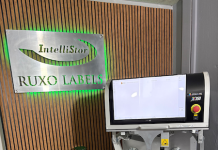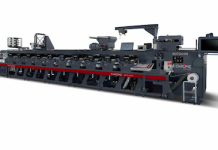Tilia Labs and Cerm have announced a partnership that aims to serve the label printing industry.
The two companies will combine their strengths to offer integrated prepress capabilities dedicated to maximising efficiencies in label print production on an ongoing basis.
The initial result of the collaboration between the two companies is a new, seamless integration between Cerm MIS and tilia Phoenix ganging capabilities to deliver a ‘Plug and Play’ solution for optimising sheetfed label production workflow, from design through to distribution.
According to Geert Van Damme, managing director of Cerm, increasing demand from customers for an ‘intelligent ganging system’ acted as the catalyst for Cerm to explore options for a dedicated imposition solution. ‘Cut & Stack sheetfed label producers were asking for a sophisticated capability that would allow them to combine a variety of labels with different sizes, colours and quantities on print sheets,’ said Van Damme.
‘We tested several different offerings and options with a number of customers and tilia Phoenix came out way ahead in every respect. Its speed was the first thing to impress everyone. It also offers an extensive set of preferences, allowing the print shop to align the system with its routine production habits. The user can make any number of changes to the chosen option and even save it as a template for the future. On top of this, the system is very intuitive, for usability it couldn’t be matched.’
Tilia Labs’ flagship imposition solution, tilia Phoenix, draws on new developments in Artificial Intelligence (AI) in automating planning and imposition for all types of devices and print applications. At its hub is Imposition AI, a set of tools and protocols designed to search across millions of possibilities to calculate the most cost-effective ganging and nesting combinations for up to 1000 orders at a time. The system factors in parameters, such as job specifications (quantity, dimensions, colours, substrates), presses/print devices, post-press requirements, and delivery considerations, to deliver optimal layout options.
In the combined solution, the Cerm MIS interfaces directly to Phoenix as to an intelligent ‘black box’, without the need to switch back and forth between applications. A group of individual orders can be ganged in the most competitive way, based upon the calculation of total production costs. The preferred ‘option’ can be stored during estimation and re-used for repeat production runs, even allowing individual elements within the template to be swapped for identically shaped labels. If significant changes are called for, the gang-sheet can be opened, elements can be replaced or added and then re-ganged. When a final option has been selected, tilia Phoenix generates print-ready ganged layouts and imposition JDF instructions. Van Damme commented that, due to Cerm’s existing integration with Esko Automation Engine, the Phoenix JDFs will automatically drive Esko’s platemaking, offering additional time and cost savings.






















